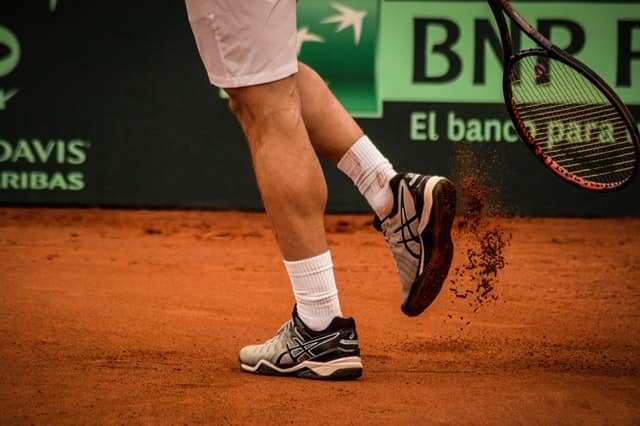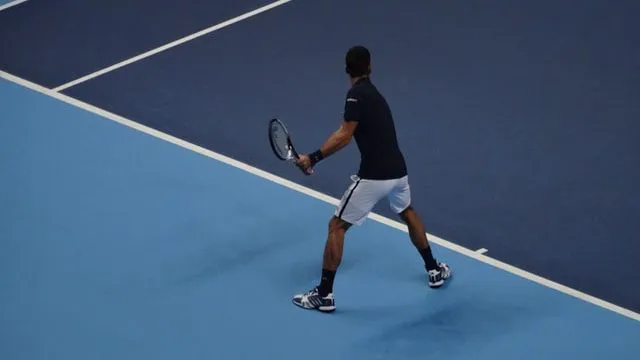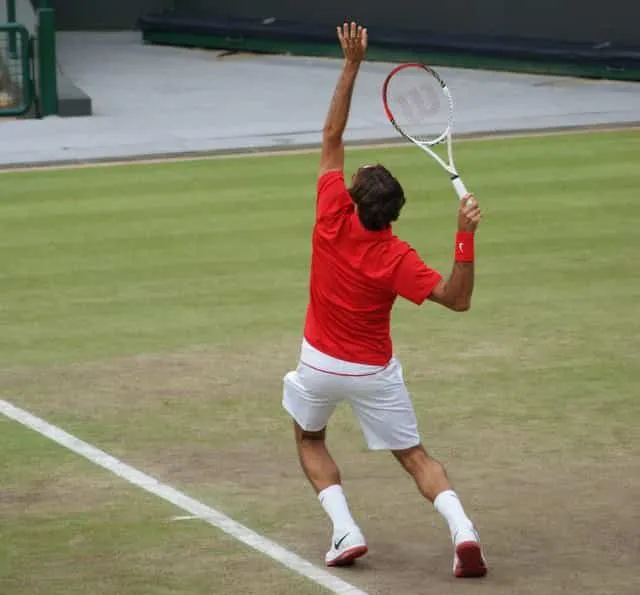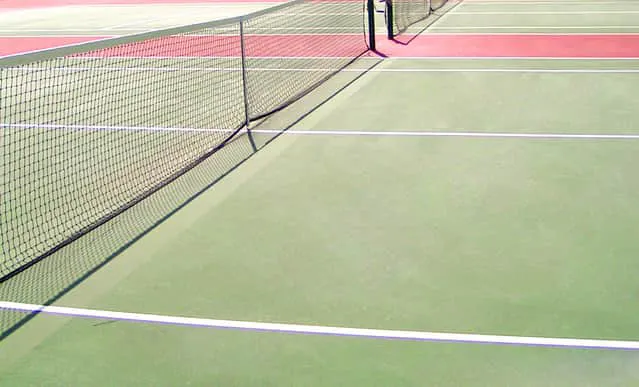Tennis court: types and comparison of ball behavior
Tennis is played on different surfaces, and each one of these tennis courts has specific qualities that favor any particular player.
For instance: Nadal is known for clay courts, Federer for grass courts, and Djokovic for hard courts.
In this article, we will see why the ball behaves so differently on clay, grass, and hard courts and also carpet courts
During a normal rally, the ball spends only 5 milliseconds in contact with the ground. But in that fraction of a second, the ball takes its behavior.
Clay courts:

To be an unbelievable clay court player, you have to be pretty good at everything: good forehand, good backhand, good serve, great stamina, and nice defending and attacking.
Clay is known for the slowest of the four surfaces. On contact with the loose clay, the ball digs in, slowing it down and increase the exit angle.
This means high bounces to the ball, and its flight is slowed even further by the loose clay particles, which catch in the fuzz of the ball and increase drag.
Moreover, in clay courts, you will have more time to get to your ball, move your feet, but meantime it’s quite tiring. Because you need to use your own power to generate the speed and the spin.
With more time to return, players on clay can slide into position taking advantage of the loose surface.
Only 5.5% of serves on clay are aces. That’s the lowest percentage of the three surfaces.
The best player on this surface is Nadal. He knows exactly the way he has to play on clay, he’s got these shots with a lot of spin, and he knows how to run.
He defends better than anybody. And as soon as he has the control of the point, he gives you so much spin that you are not able to get into the court again.
Hard courts:

To play successfully on the hard court, you need a big serve, fantastic groundstrokes, and to be physically strong.
Unlike on grass or clay, the ball can’t dig into the surface of a hard court. This means the ball conserves more of its speed.
Which Makes the average hard court medium, fast, and with a high bounce.
But all these advantages come at a price. If we’re talking about a player’s health, things are going to be much harder if you catch an injury on the hard court.
If you’re running all the time on a hard surface, it’s going to be painful for your knees, and all your body. You will suffer more than if you were running over a soft surface.
A 17-year study showed there are more matches abandoned due to injury on hard courts than on other surfaces.
On hard courts, Djokovic is the best player in the world. He plays the ball flat when he wants, and he knows how to run on hard court, he can run as many hours as he wants, he has great defending techniques.
His groundstrokes are fantastic. He’s hitting the ball hard, and placing the ball in the correct corner of the courts where the other opponents have no answer to his shots.
Hard court make up 70% of the most valuable tournaments on the ATP tour.
Grass courts:

When the ball strikes a grass court, it bounces with very low friction.
Contrary to the other surfaces, the ball doesn’t bounce much in grass. It slips as soon as it bounces. And loses very little speed, and the exit angle is the lowest of the three surfaces (grass, clay, and hard).
Grass courts have the lowest break point conversion percentage, typically around 33%.
You have to be really close to the ground all the time and it’s hard to defend and to run because it’s slippy.
To compensate for the speed of grass, players have to be able to react and move faster to reach the ball quickly.
The average grass court match is 30 points longer than hard or clay court matches.
There’s no doubt that Roger Federer is the best player in the world for the grass court. Here, the points are shorter, So Roger doesn’t have to run that much.
In addition to the unbelievable serve that he’s got, he also perfects the volleys. Which made him win 8 Wimbledon titles.
Carpet courts:

But there is a 4th type of tennis courts. This so called forbidden surface, because it is no longer in the professional tour. But why is that?
This type of court favors the serve and volley style of play. It’s the fastest type. With low bounces of the ball, but much softer on the player body compared to a hard court.
This type of court is the cheapest to maintain. It’s made from artificial turf and sand.
Professional players used to play on this surface. They were used first in the early 90’s. And because of carpet courts were the fastest playing courts, the points were very short.
In consequence, the ATP and ITF, the two governing bodies of tennis, decided to eliminate carpet court in favor of other surfaces, which would result in longer rallies.
Carpet courts were completely discontinued on the professional tour in 2009, but there are some challenger tournaments that use this type of courts
John McEnroe is considered one of the all-time great carpet court players with a record of 349 wins and 65 losses.
Because of slow-motion technology, the unique properties of these tennis courts: clay, grass, hard, and carpet are revealed. Just a fraction of a second of bounce is enough to entirely change the behavior of a tennis ball, and create three different types of tennis.
